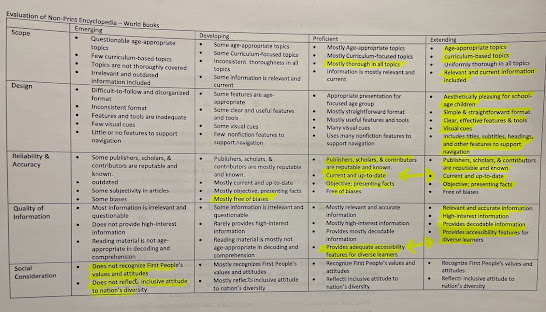A library is a place of safety, a haven from the world. It’s a place with librarians in it.We need to teach our children to read and enjoy reading.We need libraries. We need books. We need literate citizens.
Neil Gaiman, 2013
"The reference interview is fundamentally a conversation between the school library media specialist and the study, for the purpose of clarifying the students' needs and aiding in meeting those needs" (Riedling, 2013, p.99)
We need literate citizens. People learn best when they feel safe and cared for, in an environment that nurtures trust and openness.
 |
| Photograph was taken in Langley, BC February 2023 |
 |
| Created on Canva |
 |
| Photograph was taken in Langley, B.C., February 2023 |
1) to ascertain what information the student wants
2) to clarify the question (what it really means)
3) to discover the amount, level, and difficulty of the resources that will answer the question
(Riedling, 2013, p. 103)
 |
| BCTLA.ca |
As I have mentioned in my previous blog, a space encyclopedia is the extent of our K-5 physical resource reference collection. Encyclopedias are limited to more topic-related rather than something vaster like Britannica. After more probing on the district elementary's catalog, almanacs have more recent publishing dates and National Geographic dominates many of the elementary schools' collections. I use the term "dominating" loosely as there are only one or two copies of resource reference titles within the entire district of elementary schools.
 |
| bitmoji.com |
SD35 provides across-the-district resources like the digital resources found on their website as well as resources from the district learning commons. Oftentimes there is something new like Mystery Science available for the year, but each school would have to purchase or ask the district for funds to continue a digital resource if teachers asked for it. This doesn't always mean schools receive it.
"The main goal in acquiring learning resources is to make them available as quickly, efficiently, and cost-effectively as possible. The purchasing process is enhanced by ordering from as few sources as possible; for example from consortia, wholesalers or jobbers, bulk ordering of key resources, etc." ((ERAC, 2008, p. 76). I see this as part of my role as a TL to promote the materials we have available to us as educators through staff meetings, e-mails, and collaboration.
"In carrying out these evaluations, it is recommended that teachers consider all five areas of the Ministry evaluation criteria: curriculum fit, content, instructional design, technical design, and social considerations" (ERAC, 2008, p.75). A few years ago, teachers were able to use their own Apple ID and add apps to their class iPads without consulting evaluative-type permissions from the administrator. Now, apps can only be downloaded through a self-service which has been vetted by the district IT department.
Money is tight and educators need to be proactive. I fully support open access to resources. If educators can back up the rationale behind using them using a school or district selection criteria and the administrator is aware of the use, then this would save the classroom and school money and the resource can easily be shared amongst colleagues. When evaluating and then selecting such resources some points to keep in mind are:
- differentiation to fit student levels and age-appropriateness
- copyright issues
- tech issues (as it is already difficult to get IT to problem-solve vetted resources from the district)
- quality as we want to give the best resources to our learners
Nothing compares to a live human being in your learning environment whose primary job is to boost your learning. Paralleling the LC as the "hub" of the school community, Clinton states: "We need libraries more than ever because they are places for communities to come together... as librarians you go above and beyond every single day to serve the needs of the people living in your communities."
 |
| Photograph taken in Langley, B.C. 2023 |
 |
| Photograph taken in Langley, B.C. 2023 |
References
Bctladotca.files.wordpress.com. (n.d.). Retrieved from https://bctladotca.files.wordpress.com/2019/05/bctla-presentation.pptx
CNN. (2017). Hillary Clinton full Ala Conference speech. YouTube. Retrieved February 15, 2023, from https://youtu.be/S8OEAPSFp4c.
Gaiman, N. (2013) Neil Gaiman: Why Our Future Depends on Libraries, Reading and Daydreaming. The Guardian.
http://www.theguardian.com/books/2013/oct/15/neil-gaiman-future-libraries-reading-daydreaming
Perkins, M. (2013). Canva: free design tool. Canva. Retrieved February 16, 2023, from https://www.canva.com/
Riedling, A. M., & Houston, C. (2013). Reference skills for the school librarian: Tools and tips. Libraries Unlimited, an imprint of ABC CLIO, LLC.







































